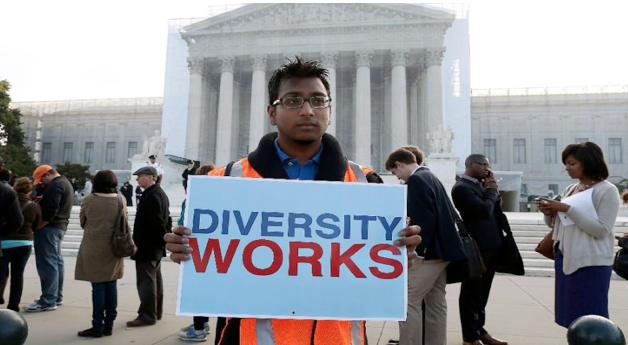CommentsURBAN PERSPECTIVE--The California legislature and Governor Brown now have all the ammunition they need to do what they should have done years ago. And that’s dump the outdated, outmoded, and grossly harmful Proposition 209. That’s the state amendment passed by voters two decades ago in 1996 that banned the use of race as a factor in college admissions.
The ammunition was supplied convincingly by the US Supreme Court when it strongly upheld the University of Texas’s affirmative action program. Justice Anthony Kennedy rammed the point home that race can be considered in admission to insure broad, and meaningful racially diverse colleges.
California Attorney General Kamala Harris further underscored the critical importance of affirmative action at California colleges in her friend of the court brief.
Affirmative action also assures the fair and equitable use of tax dollars for public education. This is a point missed or deliberately distorted in the affirmative action wars. That is that African-American and Hispanics pay taxes, lots of taxes, and are vital public stakeholders. Yet when colleges and universities shut the door or severely limit the number of African-American and Hispanic students at public institutions this means their tax dollars’ amount to de facto support of modern day quasi Jim Crow education. They are forced to pay for educational services and advantages in higher education that white students get and their children are denied.
Studies on college admissions to California colleges and universities have repeatedly found that there was a big plunge in the number and percentage of Black and Hispanic student enrollment after the passage of Prop. 209. This downward trend has remained agonizingly steady over the years.
The studies also found that colleges and university administrators have done everything they could to devise policies and strategies employed to deftly skirt around Proposition 209 to ramp up the low numbers of black and Latinos on the campuses. The efforts have failed to boost the numbers. The problem of stagnant or declining Black and Hispanic student enrollment is made even worse by the widening gap between the percentage of underrepresented minority students graduating from California high schools and the percentage enrolling at UC.
In 2014, the California senate took a big stab at trying to roll back Proposition 209 when it passed theConstitutional Amendment 5. This would have given voters another chance to consider the use of race in college admissions. The bill was pulled after some Asian-American constituent groups claimed that reinstituting affirmative action would do major harm to Asian-American students' chances of getting admitted to state colleges and universities. The charge that Asian-Americans would and are getting the short end of the admissions stick from affirmative action doesn’t hold up.
Asian-American students already make up a disproportionate number of students at many public universities. According to university figures, at the University of Texas they make up 16 percent of the university enrollees though they are only 4 percent of the state’s population.
The figures there are typical of their enrollment at many public universities where Asian-American students make up double digit numbers of the student population.
The other old argument is that affirmative action is just another way of imposing quotas that would admit a lot of unqualified, poorly educated Black and Hispanic students to the colleges. This is nothing more than a rehash of the old quota or reverse bias argument that’s been used for years by conservatives to thwart affirmative action.
Quotas have long since been ruled illegal. Despite popular myth even before the imposition of Proposition 209 in California there was never a quota system that mandated a set number of Black and Hispanic students be admitted at any California university or state college. Race, then, was simply used as one of several factors that could be considered in a student’s admission.
The brutal reality is that Proposition 209 is a relic of a time past when the relentless attack on affirmative action was a sneaky, and malicious way to maintain a racially discriminatory, two tiered education system that blatantly excluded Black and Latino students. It was bad public policy then, and in the two decades that Proposition 209 has been on the books, it still is.
Now that the Supreme Court has spoken, there’s absolutely no reason why California lawmakers shouldn’t speak too and dump Proposition 209. Their swift action on this can and will serve as a model for other states that followed California’s lead and imposed bans on affirmative action in higher education to make affirmative action a reality again. We’ll all benefit from that.
(Earl Ofari Hutchinson is President of the Los Angeles Urban Policy Roundtable and an occasional contributor to CityWatch. For more Hutchinson insight.)
-cw
Explore
Our mission is to promote and facilitate civic engagement and neighborhood empowerment, and to hold area government and its politicians accountable.

 CityWatch Los Angeles
Politics. Perspective. Participation.
CityWatch Los Angeles
Politics. Perspective. Participation.
26
Sat, Apr















